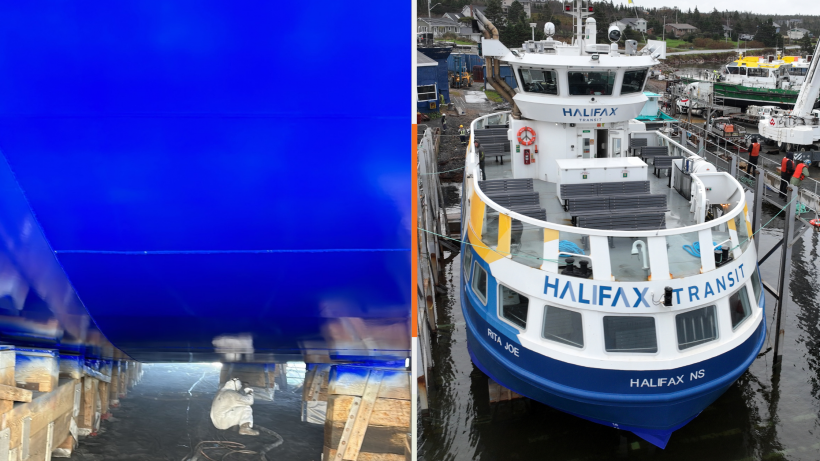When Marcel Gaier commutes to work these days, he often travels via a ferry treated with his own company’s environmentally friendly hull coating.
Gaier is the chief technology officer for GIT Coatings, previously Graphite Innovation and Technologies, which he co-founded eight years ago with Mo AlGermozi, the chief executive officer. Their business has seen about 400 percent sales growth so far this year, after they closed out 2023 by coating the Halifax Transit ferry Rite Joe, named for the Mi'kmaq poet.
GIT has been building out its teams in Singapore, Germany and Greece — global shipping hubs — and recently closed deals to coat the fleets of Hong Kong shipping giant Pacific Basin and Helsinki-based Finnlines. Just over a year after GIT raised a $10.2 million Series A funding round, a total of nearly 300 vessels have been coated by the company worldwide, with close to 95 percent of its sales coming from exports.
“We are seeing a shift in mentality from the industry to invest in more sustainable technology, and trying to be more practical when it comes to marine growth or biofouling management,” Gaier said in an interview Friday. “The ship owners really want to keep their ships really clean, so they are very efficient and they are not polluting with invasive species.”
GIT manufactures a suite of graphene coatings designed to prevent corrosion and prevent the buildup of organisms like barnacles and algae, called biofouling in the industry, which shipping lines have historically prevented with poisons called biocides.
Graphene, in contrast, is a carbon-based material that is 200 times stronger than steel and efficiently conducts heat and electricity, while being safer for the environment than conventional solutions. It also serves to reduce friction, indirectly cutting ships’ fuel consumption and greenhouse gas emissions.
AlGermozi and Gaier’s team started the commercialization process in 2022 when they signed a deal with Eastern Pacific Shipping of Singapore. Many of its large contracts, including the Finnlines agreement, have grown out of smaller deals with clients that proved happy with the coatings.
Gaier said his company's coatings are "a bit ahead of legislation" as they don’t have biocides or almost any other volatile materials. "This really facilitates the adoption for a lot of clients, because they have to comply with emissions regulations and environmental regulations when they use the ships in specific regions,” said Gaier.
“We’re seeing a lot of local jurisdictions now being aware of the biocides and the toxic chemicals that the commercial anti-fouling paints use.”
Canada is among the jurisdictions tightening rules around the use of biocides in shipping, with new regulations set to take effect in May that will require all biocide products to be specifically approved by the federal government before being imported, sold or advertised in the country.
GIT, which has grown from a 20-person team last year to more than 50 this year, installs its coatings by collaborating with shipyards in the region best placed for the needs of the client. GIT employees train staff at the shipyards to perform the installations themselves, which has lasting benefits because the industry bodies that govern large vessels require their hulls to be periodically recoated.
“Most ships, they … take out of the water and they do retrofits of the engine, propeller and hull, many areas of the ship, every two-and-a-half to five years,” Gaier added. “Our coating, we are a more durable alternative, so it’s engineered to be more mechanically durable. We can [last] longer than the current coatings in the market.”










